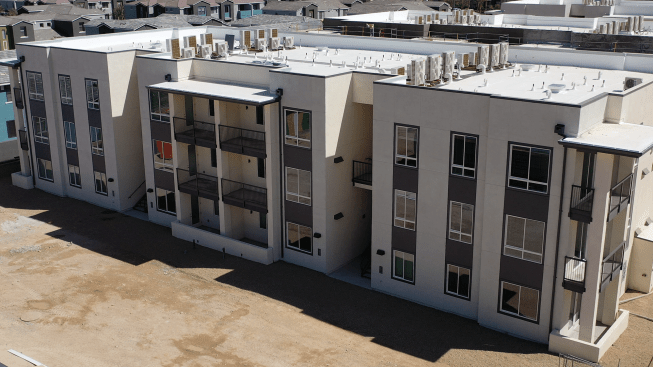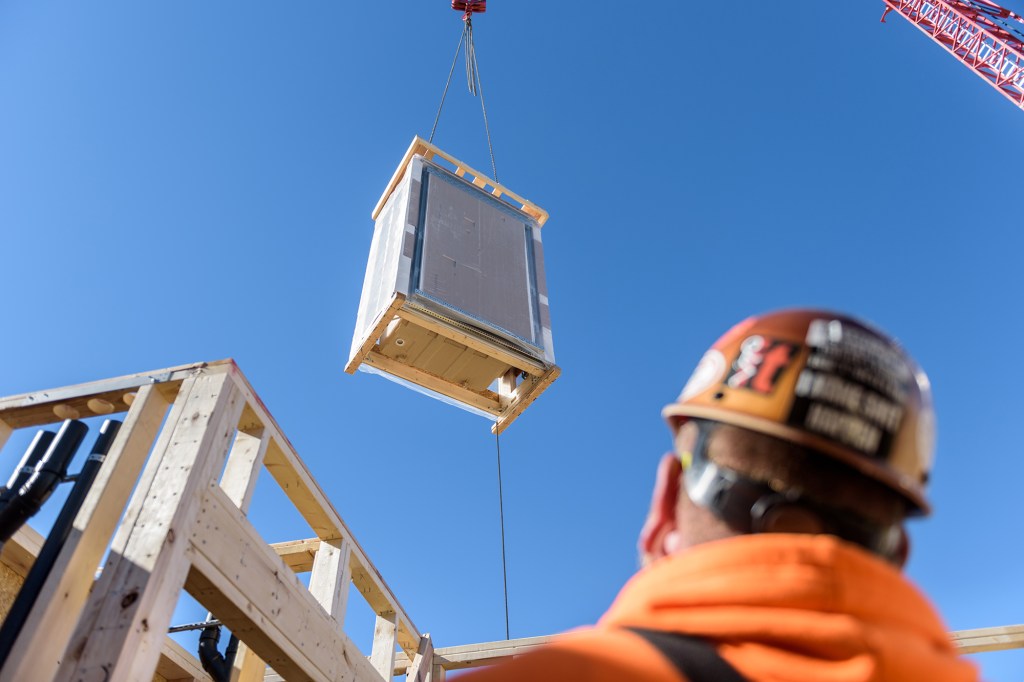The biggest change in multifamily construction that we’re likely to see over the next decade isn’t what amenities will go into the apartments or how they’re financed, but rather how long it will take to build them.
Leading-edge developers are exploring ways to speed up construction, sometimes by implementing more efficient building processes and sometimes by embracing new products. Their effort generates multiple payoffs:
- Faster time to occupancy, thus boosting cash flow;
- Reduced borrowing costs, so projects pencil out better;
- Less need for materials, which also means you’re waiting less time for materials to arrive; and
- Expanded sales opportunities, because you’re building more stuff in the same amount of time.
Time-saving efforts are getting attention in part because the increased construction work we’ve seen this decade has only clogged the pipeline further, not improved it. A recent NAHB analysis of Census Bureau data concluded that the average time needed for a multifamily project lengthened by over 30% between 2013, when it took 12 months from start to completion, and 2017, when the average hit 15.7 months. For multifamily projects with 20 or more units, the average in 2017 was 17.6 months.
50 Years of Decline
What’s the holdup? Regulatory red tape often gets cited, and bad weather can slow a project. But developers have come to realize the construction process deserves blame, too. Research by the McKinsey Global Institute concluded that U.S. agriculture’s productivity rose 16 times faster than construction between 1950 and 2010 and manufacturing was 8.6 times better. In fact, construction’s labor productivity has fallen since 1968, the authors contended.
Clark Ellis, a principal and co-founder of the Continuum Advisory Group, says numerous studies indicate an average of 33% and as much as 40% of the time a labor force spends on a site is spent on suboptimal tasks. Minutes wasted during searches for needed materials is one example, the consultant says, as research suggests materials move on site an average of four to five times before they’re put into place. “That’s because the truck driver usually decides first where to drop it, and the truck driver doesn’t want to have to wait for a project guy to tell him,” Ellis adds.
Installing incorrectly and then having to reinstall a product also wastes time. So does waiting for instructions from a manager or a superintendent, who in turn are awaiting orders from their bosses. Every misstep slows progress and extends the time needed to finish the project.
On the other hand, if you can reduce that wasted time to 15% of all hours on the job, “it’s pure profit,” Ellis says. “And there’s a scheduling benefit, too.”
The 90-Day Challenge

Courtesy: Katerra
Katerra’s K-90 Building Project in Las Vegas, NV
Katerra attacked this problem recently by creating what the Silicon Valley-based construction innovator called the K90 Building Project. Its goal was to build a 24-unit garden-style apartment building in Las Vegas in 90 days, from framing start to building delivery. Its main solution was to treat the construction job like a manufacturing project. One key difference from the status quo is that, during K90, all parties involved worked together from start to finish on all the design work before starting production. That helped identify problems before they cropped up in the field.
Teams communicated with each other daily, with an emphasis on finding ways to make each group’s output mesh with the others. For instance, deliveries were organized to ensure that materials and tools needed for a job were in a designated, conveniently reached area precisely when they were required. That kept the workforce operating as productively as possible. Framing work that normally would take 70 days on a project this size was accomplished in 26, Katerra says. The entire project was finished in 86.
Katerra could do this in part because it’s far more vertically integrated than are most builders, but it’s not unique. Across the country, developers are examining ideas that slash time to occupancy.
One source of inspiration comes from the hotel business, which is just as eager to get customers into rooms quickly. Firms like Marriott International are embracing modular construction, in which entire sets of rooms are built in a factory while the site is being prepared. Then the modules—finished to the point where they even contain the beds, furniture, and bath fixtures—are taken to the job site and stacked into place. This so-called 3D volumetric style of construction can shorten the amount of time needed from plan to finish by 20% to 50%, McKinsey estimates.
Panelized Progress
Thinking even simpler, developers of garden-style apartments can go beyond trusses to embrace wall panels that have been built off site. All you need then is a few nails to put the panels together and a crane to move the completed unit. Factory OS, an off-site builder of multifamily units based in Vallejo, Calif., claims to build 40% faster and 20% cheaper than on-site construction.
Looking further up, early proponents of mass timber construction say they save time in part because a wood building is lighter than a steel-framed one, so you don’t need to pour as thick of a concrete slab to stabilize the building.
Given labor shortages, construction slowdowns, and the time value of money, there rarely has been more will to improve. It’s finding the way to success that is the problem. Becoming more efficient requires all parties to commit to work together as a team, with consideration for others’ needs. Indeed, Katerra found there were times in K90 when the best solution was to have one party spend more time on a task so that other parties would spend less.
Cooperation among developers, architects, general contractors, subs, suppliers, manufacturers, and software providers is tough already, but the challenge is compounded by the arrival of new products that are unfamiliar to the group. Take mass timber as an example. Architect Jonathan Watts of Los Angeles believes it will become popular. But he also says of mass timber: “The advantage is that it’s quicker. The disadvantage is that nobody knows how to use it.” Indeed, researchers at the University of Oregon and Oregon State are busy studying mass timber’s performance aspects today while Washington State is heavy into research on modular so that developers will have the data needed to feel confident about choosing them.
In a sense, developers are starting to heed the advice of legendary basketball coach John Wooden: “Be quick, but don’t hurry.” Developers playing the construction game know they need to speed up, but not get hasty. It’s one of this era’s keys to victory.

